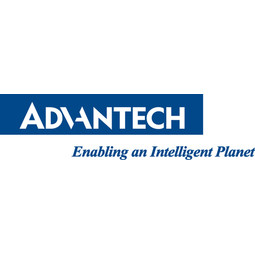
Technology Category
- Automation & Control - Electric Drives & Control
- Automation & Control - Supervisory Control & Data Acquisition (SCADA)
- Processors & Edge Intelligence - Embedded & Edge Computers
Applicable Industries
- Retail
Applicable Functions
- Business Operation
Use Cases
- Building Automation & Control
About The Customer
Convenience store chain in Thailand
The Challenge
Since electricity costs keep on rising, the bills for convenience stores keep on increasing and unfortunately it’s difficult for convenience stores to raise their prices to maintain the same profit margins. Variable overheads are difficult to budget for and give accountants a headache, therefore one convenience store chain in Thailand has decided to redress the balance and put themselves in chargeof power generation by installing solar panels in their stores.
Our customer wanted to reduce their energy costs by at least 10 percent and having installed solar panels in their store locations they needed to be able to send the power to where it was needed and when it was needed. Since the stores are open for 24 hours and it’s onlysunny forroughly 12 of those, it was essential that the power distribution to the lighting and refrigeration units was managed efficiently.
The Solution
To manage the distribution of power, the customer implemented a building automation system using BASPro software installed on a DDC controller. By using a touch panel computer, with WebAccess installed on a 10.4” touch panel computer, the power can be controlled as necessary.
BASPro is a programming software package suitable for building automation application, perfectly integrating with BAS-3500 Series DDC Controller (Direct Digital Controller). BASPro features rich function blocks like mathematical calculation, dataconversion, logic operation, alarm, eventand timer, and control algorithm (PID, Ramp, ON/OFF switch control). Moreover, BASPro also provides many BA domain function blocks, such as scheduler, HVAC calculation and sequential control, which are commonly used in building applications. Developers can benefit from savingdevelopment timeby the function blocks. Engineers can developapplications on their computer. After the application program is complete, it canbe downloaded to the BAS-3500 series through Ethernet. Then BAS-3500 series becomes a standalone controller since it can execute the program by itself. Besides, BASPro delivers simulation function that you can observe the program execution situation before the program is downloaded to the BAS-3500 series.
WebAccess is a browser based SCADA software that is used to graphically control and monitor the data from the BAS-3024 and ADAM-4055 remote IO modules attached to the cooling units and the lighting. It is installed on a TPC-1071H touch panel computer. The TPC -1071H is a 10.4” SVGA TFT LED LCDIntel Atom Dual-core D525 that includes WindowsXP embedded and WebAccess.
The EKI-2525/2528 supports a Fast Ethernet solution. The power is a 12 ~ 48 VDC redundant input design, and is secured with a double protection mechanism: Power Polarity Reverse Protect and an Overload Current Resetable Fuse. The former tolerates reverse power wiring while the later secures the system from overload currents. Asthe power supply turns normal, EKI-2525/2528 will automatically get back to work. Each port of EKI-2525/2528 has 2 LED’s to show the link status transmission speed and collision status. It also provides a relay output for an eventalarm.In theevent of a power failure,the built-in LED willactivate the alarm to notify administrators. Engineers can simply verify the hardware status by checking the LED, and have troubleshooting easy and quick. EKI-2525/2528 comes with compact metal housing that rates IP30 to help against from dusty industrial environments.
BAS-3520 is a standalone programmable controller specially designed for building automation (BA) applications. Designed as a typical DDC(Direct Digital Controller), BAS-3520 delivers various of onboard I/O including universal input, analog output, digital input and digital output, providing flexible options to satisfy versatileapplication requirements. It also features powerful BASPro programming tool for engineers to quickly develop their application. BASPro delivers many function blocks suitable for BA application, such as scheduler, HVAC calculation, sequential control, PID control, alarm, and event. Its compact size makes it an ideal solution tofulfill BA installation environment. Connected to the controller are BAS-3024 Remote IO module and ADAM-4055 modules.
The BAS-3024 expansion I/O modules can be stackedonthe DDC controller, or can serve as remotestandalone I/O modules through an RS-485 network. These expansion I/O modules add both scalability and flexibility to Advantech BAS-3000 solutions. Like the DDC, I/O expansion modules can be programmed using the BASPro programming tool.The ADAM-4055 offers 8-ch. isolated digital inputs and 8-ch. isolated digital outputs for critical applications. The inputs accept 10~50 Vvoltage, and the outputs supply 5~40 VDC opencollector. Consideredto be user-friendly. The ADAM-4055 is also builtwith LED indicator for easy status reading.
BASPro is a programming software package suitable for building automation application, perfectly integrating with BAS-3500 Series DDC Controller (Direct Digital Controller). BASPro features rich function blocks like mathematical calculation, dataconversion, logic operation, alarm, eventand timer, and control algorithm (PID, Ramp, ON/OFF switch control). Moreover, BASPro also provides many BA domain function blocks, such as scheduler, HVAC calculation and sequential control, which are commonly used in building applications. Developers can benefit from savingdevelopment timeby the function blocks. Engineers can developapplications on their computer. After the application program is complete, it canbe downloaded to the BAS-3500 series through Ethernet. Then BAS-3500 series becomes a standalone controller since it can execute the program by itself. Besides, BASPro delivers simulation function that you can observe the program execution situation before the program is downloaded to the BAS-3500 series.
WebAccess is a browser based SCADA software that is used to graphically control and monitor the data from the BAS-3024 and ADAM-4055 remote IO modules attached to the cooling units and the lighting. It is installed on a TPC-1071H touch panel computer. The TPC -1071H is a 10.4” SVGA TFT LED LCDIntel Atom Dual-core D525 that includes WindowsXP embedded and WebAccess.
The EKI-2525/2528 supports a Fast Ethernet solution. The power is a 12 ~ 48 VDC redundant input design, and is secured with a double protection mechanism: Power Polarity Reverse Protect and an Overload Current Resetable Fuse. The former tolerates reverse power wiring while the later secures the system from overload currents. Asthe power supply turns normal, EKI-2525/2528 will automatically get back to work. Each port of EKI-2525/2528 has 2 LED’s to show the link status transmission speed and collision status. It also provides a relay output for an eventalarm.In theevent of a power failure,the built-in LED willactivate the alarm to notify administrators. Engineers can simply verify the hardware status by checking the LED, and have troubleshooting easy and quick. EKI-2525/2528 comes with compact metal housing that rates IP30 to help against from dusty industrial environments.
BAS-3520 is a standalone programmable controller specially designed for building automation (BA) applications. Designed as a typical DDC(Direct Digital Controller), BAS-3520 delivers various of onboard I/O including universal input, analog output, digital input and digital output, providing flexible options to satisfy versatileapplication requirements. It also features powerful BASPro programming tool for engineers to quickly develop their application. BASPro delivers many function blocks suitable for BA application, such as scheduler, HVAC calculation, sequential control, PID control, alarm, and event. Its compact size makes it an ideal solution tofulfill BA installation environment. Connected to the controller are BAS-3024 Remote IO module and ADAM-4055 modules.
The BAS-3024 expansion I/O modules can be stackedonthe DDC controller, or can serve as remotestandalone I/O modules through an RS-485 network. These expansion I/O modules add both scalability and flexibility to Advantech BAS-3000 solutions. Like the DDC, I/O expansion modules can be programmed using the BASPro programming tool.The ADAM-4055 offers 8-ch. isolated digital inputs and 8-ch. isolated digital outputs for critical applications. The inputs accept 10~50 Vvoltage, and the outputs supply 5~40 VDC opencollector. Consideredto be user-friendly. The ADAM-4055 is also builtwith LED indicator for easy status reading.

Case Study missing?
Start adding your own!
Register with your work email and create a new case study profile for your business.
Related Case Studies.

Case Study
Improving Production Line Efficiency with Ethernet Micro RTU Controller
Moxa was asked to provide a connectivity solution for one of the world's leading cosmetics companies. This multinational corporation, with retail presence in 130 countries, 23 global braches, and over 66,000 employees, sought to improve the efficiency of their production process by migrating from manual monitoring to an automatic productivity monitoring system. The production line was being monitored by ABB Real-TPI, a factory information system that offers data collection and analysis to improve plant efficiency. Due to software limitations, the customer needed an OPC server and a corresponding I/O solution to collect data from additional sensor devices for the Real-TPI system. The goal is to enable the factory information system to more thoroughly collect data from every corner of the production line. This will improve its ability to measure Overall Equipment Effectiveness (OEE) and translate into increased production efficiencies. System Requirements • Instant status updates while still consuming minimal bandwidth to relieve strain on limited factory networks • Interoperable with ABB Real-TPI • Small form factor appropriate for deployment where space is scarce • Remote software management and configuration to simplify operations

Case Study
Digital Retail Security Solutions
Sennco wanted to help its retail customers increase sales and profits by developing an innovative alarm system as opposed to conventional connected alarms that are permanently tethered to display products. These traditional security systems were cumbersome and intrusive to the customer shopping experience. Additionally, they provided no useful data or analytics.

Case Study
How Sirqul’s IoT Platform is Crafting Carrefour’s New In-Store Experiences
Carrefour Taiwan’s goal is to be completely digital by end of 2018. Out-dated manual methods for analysis and assumptions limited Carrefour’s ability to change the customer experience and were void of real-time decision-making capabilities. Rather than relying solely on sales data, assumptions, and disparate systems, Carrefour Taiwan’s CEO led an initiative to find a connected IoT solution that could give the team the ability to make real-time changes and more informed decisions. Prior to implementing, Carrefour struggled to address their conversion rates and did not have the proper insights into the customer decision-making process nor how to make an immediate impact without losing customer confidence.

Case Study
Ensures Cold Milk in Your Supermarket
As of 2014, AK-Centralen has over 1,500 Danish supermarkets equipped, and utilizes 16 operators, and is open 24 hours a day, 365 days a year. AK-Centralen needed the ability to monitor the cooling alarms from around the country, 24 hours a day, 365 days a year. Each and every time the door to a milk cooler or a freezer does not close properly, an alarm goes off on a computer screen in a control building in southwestern Odense. This type of alarm will go off approximately 140,000 times per year, equating to roughly 400 alarms in a 24-hour period. Should an alarm go off, then there is only a limited amount of time to act before dairy products or frozen pizza must be disposed of, and this type of waste can quickly start to cost a supermarket a great deal of money.

Case Study
Supermarket Energy Savings
The client had previously deployed a one-meter-per-store monitoring program. Given the manner in which energy consumption changes with external temperature, hour of the day, day of week and month of year, a single meter solution lacked the ability to detect the difference between a true problem and a changing store environment. Most importantly, a single meter solution could never identify root cause of energy consumption changes. This approach never reduced the number of truck-rolls or man-hours required to find and resolve issues.








